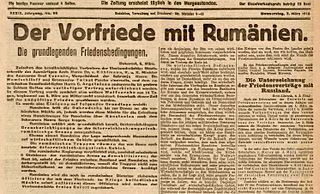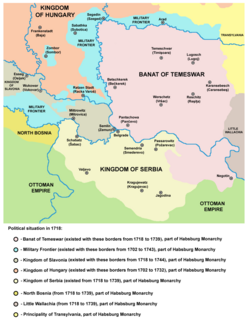 W
WThe Treaty of Adrianople concluded the Russo-Turkish War of 1828–29, between Russia and the Ottoman Empire. The terms favored Russia which gained access to the mouths of the Danube and new territory on the Black Sea. The Treaty opened the Dardanelles to all commercial vessels, granted autonomy to Serbia, and promised autonomy for Greece. It also allowed Russia to occupy Moldavia and Walachia until the Ottoman Empire had paid a large indemnity; those indemnities were later reduced. The Treaty was signed on 14 September 1829 in Adrianople by Count Alexey Fyodorovich Orlov of Russia and by Abdülkadir Bey of the Ottoman Empire.
 W
WThe Peace of Amasya was a treaty agreed to on May 29, 1555 between Shah Tahmasp of Safavid Iran and Sultan Suleiman the Magnificent of the Ottoman Empire at the city of Amasya, following the Ottoman–Safavid War of 1532–1555.
 W
WThe Treaty of Belgrade, known as the Belgrade peace was the peace treaty signed on September 18, 1739 in Belgrade, Habsburg Kingdom of Serbia, by the Ottoman Empire on one side and the Habsburg Monarchy on the other, that ended the Austro–Turkish War (1737–39).
 W
WThe Treaty of Brest-Litovsk was a separate peace treaty signed on March 3, 1918, between the new Bolshevik government of Russia and the Central Powers, that ended Russia's participation in World War I. The treaty was signed at German-controlled Brest-Litovsk, after two months of negotiations. The treaty was agreed upon by the Russians to stop the further invasion. According to the treaty, Soviet Russia defaulted on all of Imperial Russia's commitments to the Allies and eleven nations became independent in Eastern Europe and western Asia.
 W
WThe Treaty of Brest-Litovsk was a peace treaty signed on 3 March 1918 between the Russian Soviet Federative Socialist Republic and the Central Powers. However, on 9 February 1918, the Central Powers signed an exclusive protectorate treaty with the Ukrainian People's Republic as part of the negotiations that took place in Brest-Litovsk, Grodno Governorate recognizing the sovereignty of the Ukrainian People's Republic. Although they did not formally annex the territory of the former Russian Empire, Germany and Austria-Hungary secured food-supply support in return for providing military protection. The Central Powers recognised Ukraine as a neutral state.
 W
WThe Treaty of Bucharest (1918) was a peace treaty between Romania and the opposing Central Powers following the stalemate reached after the campaign of 1917. This left Romania isolated after Russia's unilateral exit from World War I.
 W
WThe Treaty of Buftea was a preliminary peace treaty between the Kingdom of Romania on one side and the Central Powers on the other.
 W
WThe Peace of Busza also known as the Treaty of Jaruga was negotiated by Stanisław Żółkiewski of the Polish–Lithuanian Commonwealth and Iskender Pasha of the Ottoman Empire in Busza near the Jaruga and Dniester rivers on 23 September 1617. Polish and Ottoman armies met, but decided to negotiate, instead of to fight. In this peace treaty Polish–Lithuanian Commonwealth agreed to cede the Khotyn to the Ottomans and to stop its interference in Moldavia.
 W
WThe Treaty of Jassy, signed at Jassy (Iași) in Moldavia, was a pact between the Russian and Ottoman Empires ending the Russo-Turkish War of 1787–92 and confirming Russia's increasing dominance in the Black Sea.
 W
WTreaty of Khotyn (Chocim/Hotin), signed in the aftermath of the Battle of Khotyn (1621), ended the Polish-Ottoman War (1620–1621). This peace treaty resulted in no border change but Polish–Lithuanian Commonwealth agreed to stop its interference in Moldavia. Both sides claimed victory, as Commonwealth saw the battle of Khotyn as successfully stopping the Ottoman Empire's invasion of its mainland.
 W
WConcluded on 30 October 1918 and taking effect at noon the next day, the Armistice of Mudros ended hostilities in the Middle Eastern theatre between the Ottoman Empire and the Allies of World War I. It was signed by the Ottoman Minister of Marine Affairs Rauf Bey and British Admiral Somerset Arthur Gough-Calthorpe, on board HMS Agamemnon in Moudros harbor on the Greek island of Lemnos.
 W
WThe Ottoman–Venetian peace treaty of 1419 was signed between the Ottoman Empire and Republic of Venice, ending a short conflict between the two powers, confirming Venetian possessions in the Aegean Sea and the Balkans, and stipulating the rules of maritime trade between them.
 W
WThe Italo-Turkish or Turco-Italian War was fought between the Kingdom of Italy and the Ottoman Empire from September 29, 1911, to October 18, 1912. As a result of this conflict, Italy captured the Ottoman Tripolitania Vilayet, of which the main sub-provinces were Fezzan, Cyrenaica, and Tripoli itself. These territories became the colonies of Italian Tripolitania and Cyrenaica, which would later merge into Italian Libya.
 W
WThe Treaty of Passarowitz or Treaty of Požarevac was the peace treaty signed in Požarevac, a town in the Ottoman Empire, on 21 July 1718 between the Ottoman Empire on one side and Austria of the Habsburg Monarchy and the Republic of Venice on the other.
 W
WThe Treaty of the Pruth was signed on the banks of the river Prut between the Ottoman Empire and the Tsardom of Russia on 23 July 1711 ending the Russo-Turkish War of 1710–1711. The treaty was a political victory for the Ottoman Empire.
 W
WThe 1878 Treaty of San Stefano was a treaty between the Russian and Ottoman empires signed at San Stefano, then a village west of Constantinople, on 3 March [O.S. 19 February] 1878 by Count Nicholas Pavlovich Ignatiev and Aleksandr Nelidov on behalf of the Russian Empire and by Foreign Minister Saffet Pasha and Ambassador to Germany Sadullah Bey on behalf of the Ottoman Empire.
 W
WThe Treaty of Sèvres was a 1920 treaty signed between the Allies of World War I and the Ottoman Empire. The treaty ceded large parts of Ottoman territory to France, the United Kingdom, Greece, and Italy, as well as creating large occupation zones within the Ottoman Empire. It was one of a series of treaties that the Central Powers signed with the Allied Powers after their defeat in World War I. Hostilities had already ended with the Armistice of Mudros.
 W
WThe Treaty of Sistova ended the last Austro-Turkish war (1787–91). Brokered by Great Britain, Prussia and the Netherlands, it was signed in Sistova in Bulgaria on 4 August 1791. The treaty was written in French and Turkish.
 W
WThe Peace of Zsitvatorok was a peace treaty which ended the Fifteen Years' War between the Ottoman Empire and the Habsburg Monarchy on 11 November 1606. The treaty was part of a system of peace treaties which put an end to the anti-Habsburg uprising of Stephen Bocskay (1604–1606).